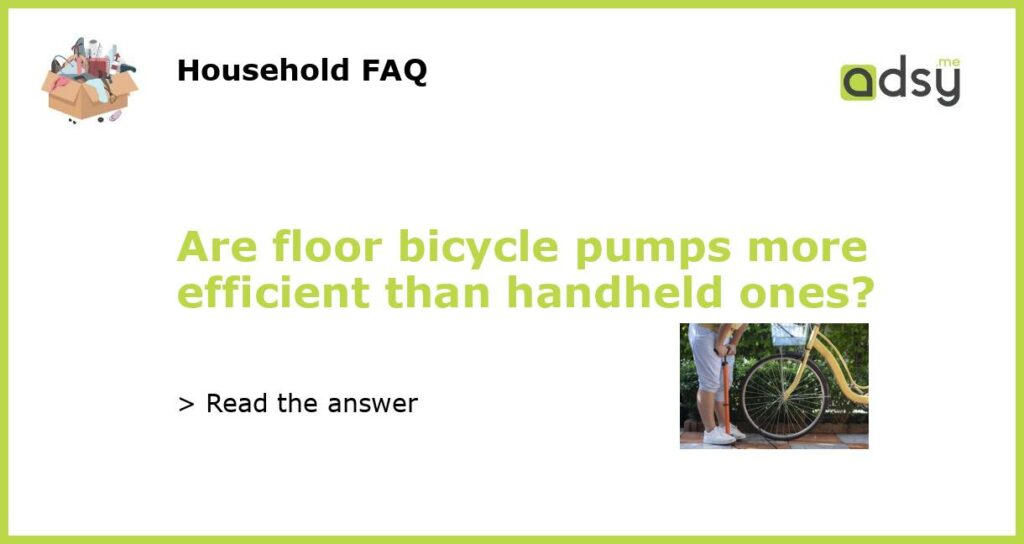For cyclists, flats are always an unwelcome occurrence. So when it happens, you want to pump up your tire as quickly and efficiently as possible. This leads to the question of whether floor bicycle pumps are really more efficient than handheld ones.
Advantages of Floor Bicycle Pumps
One of the main advantages of a floor bicycle pump is that it allows for higher air pressure, which can make a significant difference in the efficiency of your ride. With floor pumps, it’s easier to get the right pressure into the tubes, which can help you ride faster and smoother, with less risk of a flat.
Additionally, floor pumps are typically more stable when pumping, meaning you won’t have to worry about the pump shifting, or accidentally knocking it over. This makes it a safer option when you need to pump up your tire in a hurry or when you’re in a busy or crowded area.
Advantages of Handheld Bicycle Pumps
Handheld bicycle pumps, on the other hand, are more portable, which makes them the clear winner in terms of convenience. They’re also typically less expensive than floor pumps, so they’re a great option for cyclists on a budget.
Another advantage of handheld pumps is that they’re small enough to carry with you on your bike, ensuring that you’ll always have it on hand if you do get a flat while out on the road or trail.
When it comes down to it, both floor and handheld bicycle pumps have their advantages and disadvantages, and the one that’s right for you will depend on your specific needs and preferences. If you’re looking for the most efficient, stable option with the highest possible air pressure, a floor pump is the way to go. On the other hand, if you value portability and convenience over power, a handheld pump is likely the better choice.
Additional Tips for Efficient Pumping
No matter which type of pump you choose, a key to efficient pumping is to ensure that the tube is seated properly in the tire. Additionally, make sure to pump in smooth, consistent strokes, and try to use your body weight to your advantage while pumping to get the most power behind each stroke.
Finally, it’s always a good idea to regularly check and inflate your tires to the recommended pressure, especially if you’re riding frequently or tackling particularly rough terrain. This will help to prevent flats and make for a smoother, more efficient ride overall.






